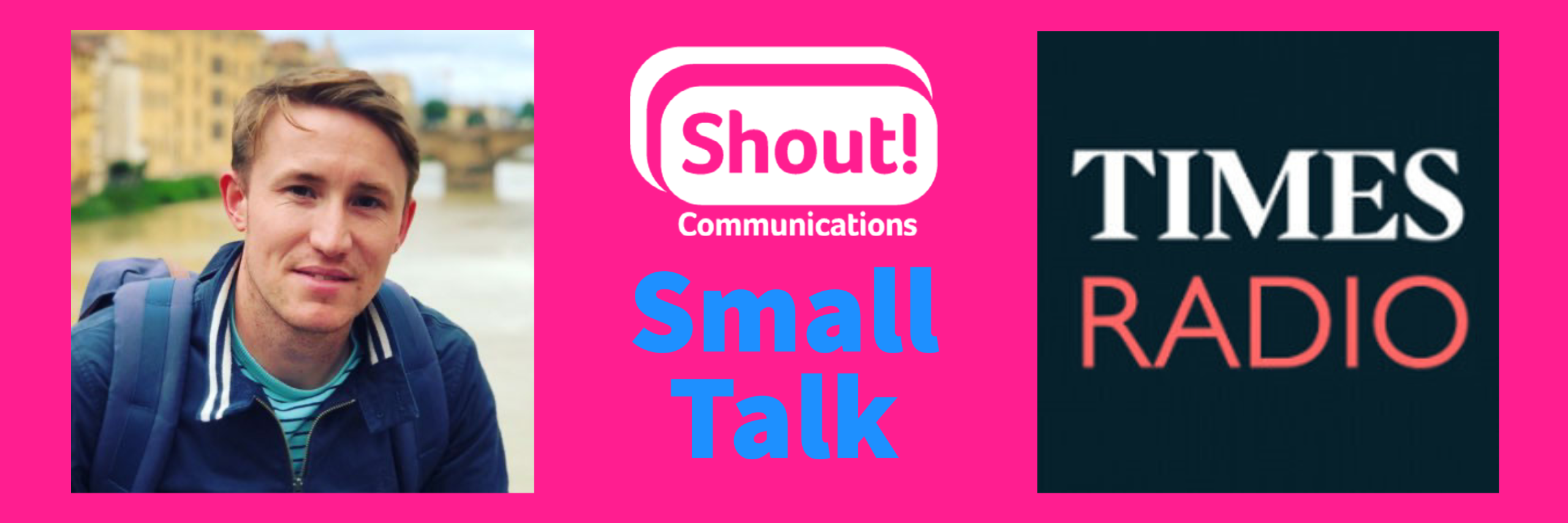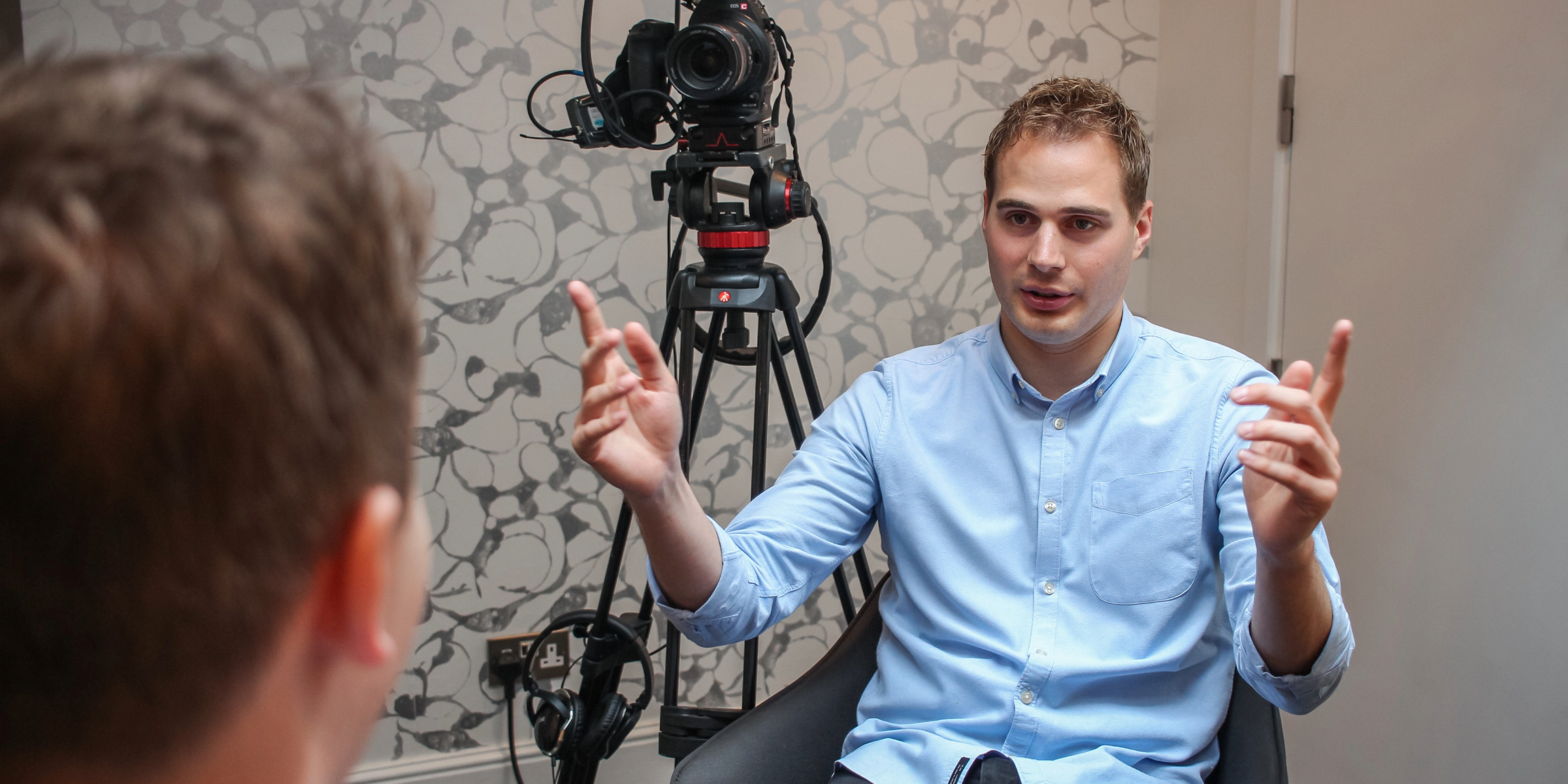Our first Small Talk speaker of 2023 was Times Radio editor, Henry Tribe. Henry says he gets around twenty PR generated emails a day, each arguing why he should take their story over any other. Of these he takes, on average, one. If you want your client or brand on Times Radio it’s worth reading what he has to say.
As heard by Shout! Communications director Keren Haynes
Henry Tribes’ role at Times Radio
Henry began his career in local radio, before spending seven years at the BBC, including the News Channel and World Service. He then moved into political journalism working with big names including Robert Peston and Tom Bradby. Henry has been in his current post for two and a half years and, as Afternoon Editor, oversees programmes that air at that time, namely Jane Garvey and Fi Glover, and John Piennar’s Drive Time.
About Times Radio
Times Radio is a sister station to the Times newspaper. Both are owned by Rupert Murdoch’s News UK and, according to Henry, there is a close synergy between them. We know that coverage on one can influence air-time or inches on the other. From a PR perspective this can only be good news.
The Times Radio audience
The station boasts over half a million listeners a week – that’s pretty good seeing how that number came from a standing start, since Times Radio was set up in January 2020.
Henry Tribe says the station has the highest number of ABC1 listeners of any commercial radio. That’s great for advertisers who assume this audience has more money than others, plus the station offers an alternative to the traditional Radio 4 crowd.
Radio listening habits
Twenty percent of Times Radio listeners tune in on a smart speaker, which tells you something else about them. A similar number listen to the output in cars, a figure less than industry experts had predicted, and most likely a reflection of the number of people who continue to work from home, post pandemic.
It’s worth knowing about listening habits from a PR point of view. Most people are doing something else when they have the radio on, so stories need to be tailored for this multi-tasking audience.
In keeping with this point, our advice is to keep stories simple. You should be able to sum up the “top line” of the story in a sentence – without drawing breath! You can then have another three or four lines to expand on the top line. When it comes to numbers you have to pull the reigns in. A smattering of statistics is as much as you get. Remember those listeners are already busy!
Times Radio programmes
Henry works across a number of mainly afternoon programmes on Radio Times and has a clear enthusiasm for working with co-presenters Fi Glover and Jane Garvey, both on their live 3-5pm show, and their “Off Air “ podcast which accompanies the programme and attracts in the region of 150 thousand listeners a week in its own right.
John Pienaar, another presenter in Henry’s stable, is a good match for Henry’s political journalism experience.
News and more news
Like the newspaper, Times Radio focuses on the issues of the day. According to Henry Tribe the mantra is “never far from the news”. In practise that means you’d never listen for more than ten minutes before the schedule reverts to the big story of the moment.
Later in the day is your best opportunity for softer stories. Mariella Frostrup for example does a travel programme once a week. Sport, cooking and foreign stories also find their place. And Fi Glover and Jane Garvey do a weekly tech slot.
Busy news agendas
As we all know, 2022 was probably the busiest news agenda anyone living can remember: Three Prime Ministers, a dead Queen and Russia’s invasion of Ukraine. Henry says there’s a huge appetite from Times Radio for detail. The Briefing Room, for example, which is available as a podcast, analyses the Ukraine war on a daily basis, attracting huge online audiences of over a million, particularly from the US.
A Times Radio listener is also hungry for a royal story – perhaps even more so than the station’s producers had anticipated. Times Radio was one of the first to announce the death of HM The Queen, after one of Henry’s contacts spotted Prince Charles at Balmoral. Prince Harry’s publication of his book “Spare”, with all its revelations, has also been lapped up.
2023, according to Henry, also promises to be a busy year; he cites a likely election in 2024, rumours of Boris Johnson having another stab to be voted in as PM again, the Tories in turmoil and Ukraine as some of the likely story contenders.
What does this mean for broadcast PR?
Oh dear, this sounds terrible for PR. You might be asking how on earth can we ever cut through organic news to get some time on-air? Henry Tribe has some guidance that might help.
Consider the audience
You should assume that a Times Radio listener is not that different from a Times newspaper reader. We’ve already been told, they’re ABC1. That means they’re intelligent, probably highly educated as well as high earning.
They’re most likely conservative, as in upholding traditional values, as well as Conservative politically. This is a huge generalisation, but they’re probably going to be interested in business and the economy. Just as the Times newspapers has several pages devoted to the topic, the radio station too will cover a good number of business stories each day, particularly during the drivetime programmes.
Henry Tribe says one difference between the paper and the station is that radio attracts a slightly younger, slightly more male audience. The younger audience has partly come about because you now have to subscribe to The Times online.
Pick the right spokesperson
Although the John Pienaar programme once took one of our spokespeople, from the Pussycat Dolls this is the exception rather than the rule. More likely, Times Radio would prefer the head of the CBI, or someone who runs a business themselves, so knows what the pressures are on a day-to-day basis.
Like us all, journalists are busy people. Henry says each programme may plan about a week ahead of going on-air. But of course no one knows what stories will break in the meantime, so offer a great guest, who ties in with that day’s news agenda, and they’ll say yes please. That obviously doesn’t always work with a planned PR campaign, but we run a programme for retained clients, hi-jacking the news agenda when it concerns their area of expertise, and it works a treat.
What to do and not to do
Don’t call Henry Tribe to ask whether he got your email. He will have got it and if it’s of interest he’ll let you know. If it’s not then you’re most likely going to hear nothing.
A well-pitched email however will get you far. Make it personal and explain why an Editor at Times Radio should care about what you’re saying.
Will you get a brand mention?
Clearly this is the holy grail of PR. Sadly, there is no hard and fast rule at Times Radio for whether you’re going to get it or not. Broadcasters run the gauntlet when it comes to crediting a brand that has got on-air via the editorial route. The BBC has its book of rules, Producer Guidelines, to adhere to. And the commercial sector, including Times Radio have advertisers.
The argument goes that advertisers will question why they’re paying for a mention when other brands get it for free. Clearly brands aren’t going to put money into producing PR campaigns unless they get some sort of return and, take PR stories out of the news agenda and some days you’d be left with gaping holes in the schedule, so a balance needs to be found.
Our own guideline is that one brand mention in a radio or television interview is a mark of success. Two in a live interview is OK but you’re pushing your luck. Don’t overdo it though. Not only will you annoy the broadcaster, frequent brand mentions is a turn off for listeners too. Better you tone it down and be a guest that is invited back.
Conducting an interview
Just as we advise with our radio days, Times Radio, like other national radio broadcasters, has continued the practise, which began during the Covid lockdown, of remote interviews. FaceTime video and Zoom are the preferred way of conducting an interview. This means all you need is a stable internet connection, a laptop and, ideally, wireless headphones. Easy!
Need some help securing opportunities on UK radio?
Securing coverage on radio and television is our bread and butter. For more about our radio PR and radio day services click here. Or give us a call on 020 7240 7373.



